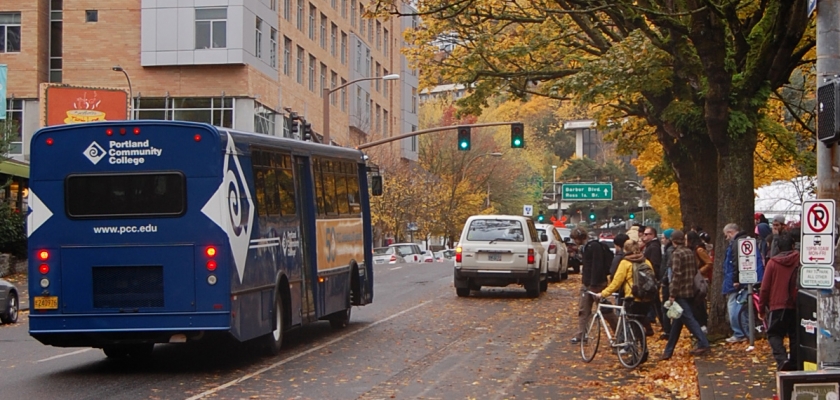OTREC research looks into contextual influences on trip generation
Posted on February 10, 2014

In urban neighborhoods, fewer automobile trips are generated as more travel modes become available.
OTREC research has taken steps toward developing trip generation rates for sites in a multimodal context.
Trip generation refers to the number of vehicle trips that are predicted to originate in a particular zone. The Institute of Transportation Engineers (ITE) provides standard trip generation rates, but these rates are primarily measured in low-density suburban areas.
In areas that have a more compact urban form, better access to transit and a greater mix of land uses, fewer (and shorter) vehicle trips might actually be generated there than the current ITE rates indicate.
A project headed by Kelly Clifton, of Portland State University, examines the ways in which urban context affects vehicle trip-generation rates across a variety of land uses.
Results from this study reveal a trend: For all land uses tested, vehicle-trip rates decrease as neighborhood types become more urban.
There is a strong industry bias toward using ITE-published rates, so that when local governments are evaluating transportation impacts and calculating transportation system development charges, they are often compelled to use the ITE rates instead of using local data, especially in the absence of an empirically tested methodology for adjusting the ITE standard rates.
Clifton’s research provides a means to adjust ITE’s Trip Generation Handbook for urban context. The methodology developed in this study allows trip generation rates to better reflect the relationship between land use, transportation and travel demand for specific land-use types located in various urban settings.
The key measure representing urban context in this study was the average Urban Living Infrastructure (ULI) score from the Metro Context Tool, developed by Metro for the Portland, Ore. metropolitan area. While the ULI measure used here can be replicated, it is not a measure that is readily available outside of the Metro region. Thus, for the time being, Clifton’s approach is limited in its applicability to the Portland metropolitan area. However, this study represents a first step in advancing national standards.
Data for more land uses and covering a wider range of urban contexts are needed to inform a nationally relevant methodology. But, many communities across the country already have a great deal of information from their own local trip-generation studies to inform a larger-scale study. The opportunity exists to create new professional standards that better reflect the multimodal nature of our cities.
To learn more about this research, click here to visit the project page or download the final report.
